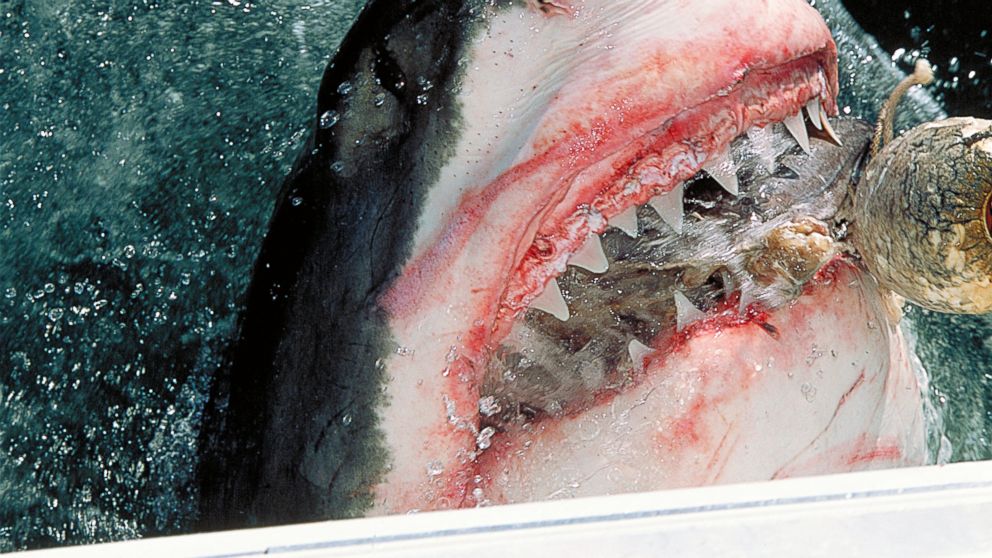Shark Versus Cow: Which Is Deadlier?
Here are five creatures more deadly than sharks.

August 11, 2014— -- intro: Despite their terrifying reputation as cold-blooded killing machines, once sharks get a taste of human flesh, they rarely come back for a second bite, according to the Discovery Channel, which is in the midst of its annual Shark Week.
In fact, sharks kill only about four people a year worldwide and only one in the U.S., according to the nonprofit organization Oceana.
Sharks aren't even close to being the most deadly animal on Earth. Here are five creatures that are -- perhaps surprisingly -- more likely to lead to your demise than a shark.
'Shark Week to Sharknado': Why We're Obsessed with Sharks
Swimmer Bitten by Great White Shark
quicklist:1category: title: Hipposurl:text: They reach up to 15 feet in length and weigh up to three and a half tons. They can sprint up to 20 miles an hour and their 20-inch teeth never stop growing. And, according to the Bill Gates Foundation, Hippopotamus kill up to 500 people a year.
Of course, there aren't any reports of death by Hippo on urban streets. Most hippo deaths take place in the wilds of Africa, with one study verifying an average of 30 people a year are killed by hippos in the country of Mozambique alone. In Africa, crocs and elephants are the only land animals more deadly.media:24931166
quicklist:2category:title: Cowsurl:text: Cows may look docile but they kill more than five times the number of people that sharks do. Using statistics from the U.S. Centers for Disease Control and Prevention, one research study reported an average of 22 deaths a year by bovines, typically due to stomping or goring.
The study noted that horses are also pretty lethal, causing up to 20 deaths per year. Agricultural workers are among the groups at greatest risk of "death by mammal," a category that also lists cats, pigs and raccoons as the cause of death.media:24931485
quicklist:3category: title: Dogsurl:text: Man's best friend is high up on the list of killer critters.
CDC statistics show nearly 4.5 million Americans are bitten by dogs each year. Half of dog bite victims are children. Though only about 40 canine bites a year are fatal according to the group dogsbite.org, the CDC reports that nearly 27,000 people require reconstructive surgery yearly as the result of a dog bite.
For the record, dogsbite.org identifies pit bulls as the most dangerous dog breed, claiming they account for over 60 percent of reported attacks. Rottweilers, American bull dogs and huskies round out the list of top canine chompers. media:24931315
quicklist:4category:title: Snails url:text:They aren't large and their top speed is only about three feet per hour, but the United States Agency for International Development lists snails as one of the top killers on the planet.
More accurately, certain fresh water snails carry parasitic worms that in turn carry a deadly disease known as schistosomiasis. When humans come into contact with water where these snails live they can become infected and die of organ failure. In sub-Saharan Africa, schistosomiasis is the second leading cause of death after malaria, with more than 200,000 deaths per year reported.media:24931024
quicklist:5category: title: Antsurl:text: Death by teeny tiny ant is becoming more common and is almost certainly more common than death by shark -- though reliable statistics of ant deaths are hard to come by. We do know that insect stings send more than 500,000 Americans to emergency rooms every year, according to the American College of Allergy, Asthma and Immunology, and more than 40 people die annually from insect sting anaphylaxis.
A recent study listed 280 species of ants throughout the world capable of causing fatalities in humans. The red fire ant, species that has invaded the southeastern part of the U.S. from Asia, stings an estimated 14 million people annually, according to entomological studies done at Texas A&M University.
Up to six percent of the population has a severe reaction to their stings and a number of deaths have recently reported. Last year, a woman in Georgia died shortly after being attacked by a swarm of red fire ants. media:24931216




